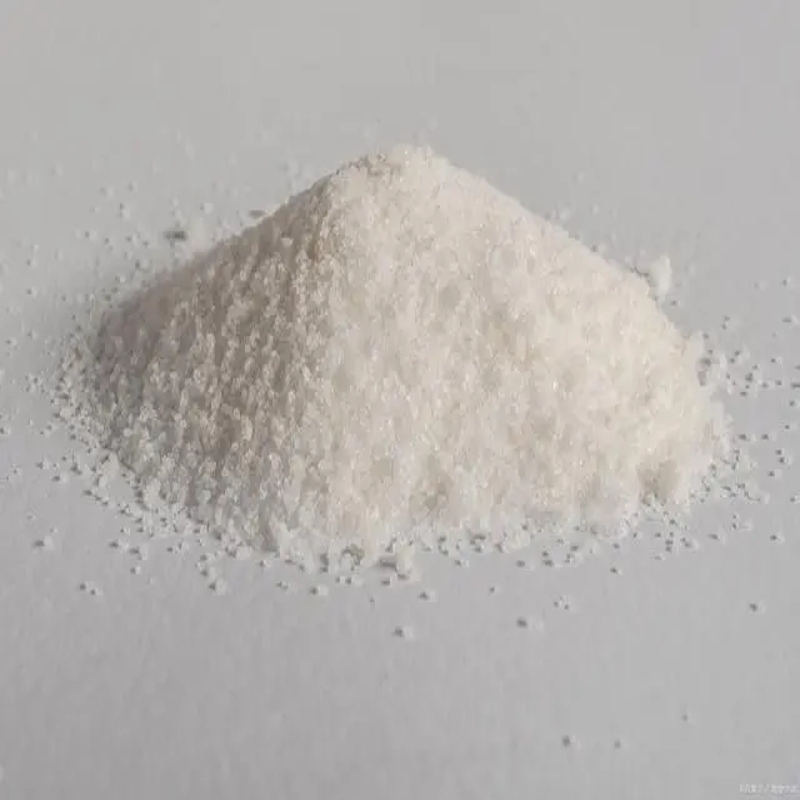-
Categories
-
Pharmaceutical Intermediates
-
Active Pharmaceutical Ingredients
-
Food Additives
- Industrial Coatings
- Agrochemicals
- Dyes and Pigments
- Surfactant
- Flavors and Fragrances
- Chemical Reagents
- Catalyst and Auxiliary
- Natural Products
- Inorganic Chemistry
-
Organic Chemistry
-
Biochemical Engineering
- Analytical Chemistry
- Cosmetic Ingredient
-
Pharmaceutical Intermediates
Promotion
ECHEMI Mall
Wholesale
Weekly Price
Exhibition
News
-
Trade Service
Autophagy refers to the process of forming an autophagosome with a bilayer membrane structure, wrapping part of the cytosol, and transporting it to lysosomes for degradation and recycling, which is essential
for resisting various stresses and maintaining cellular homeostasis.
Autophagy is closely related
to the occurrence and development of neurodegenerative diseases such as Alzheimer's disease.
Key steps in autophagosome formation include initiation, nucleation, extension, and closure
of the separator membrane (autophagosome precursor).
Scientists' understanding of the molecular mechanisms of autophagosome formation comes primarily from the study
of single-celled yeast autophagy.
The formation of multicellular autophagosomes is more complex, including multiple unique steps and the involvement
of autophagic proteins unique to multicellular organisms.
One of the important differences between multicellular autophagy and yeast autophagy is where
autophagosomes form.
Yeast autophagosomes form on the vacuolar membrane, while multicellular bioautophagosomes form
simultaneously at multiple sites in the endoplasmic reticulum.
Identifying signals that determine the formation of autophagosomes on the endoplasmic reticulum is an unanswered scientific question
in the field of autophagy.
On October 5, Zhang Hong's research group, a researcher at the Institute of Biophysics of the Chinese Academy of Sciences, published a research paper entitled Calcium transients on the ER surface trigger liquid-liquid phase separation of FIP200 to specify autophagosome initiation sites online in Cell
。 This study found that calcium transients on the surface of the endoplasmic reticulum induced by autophagy-induced conditions are key signals
that determine the formation of autophagosomes on the endoplasmic reticulum.
Calcium transients on the surface of the endoplasmic reticulum cause liquid-liquid phase separation of FIP200 complexes involved in the initiation of autophagy.
The formed FIP200 agglomerates then bind to the endoplasmic reticulum membrane proteins VAPs and ATLs and localize to the endoplasmic reticulum, becoming the starting site
of autophagosomes.
The rapid calcium chelator BAPTA-AM has been shown to inhibit the formation of agglomerates in the endoplasmic reticulum by FIP200 complexes involved in the initiation of autophagy, but this process cannot be blocked
by the slow calcium ion chelator EGTA-AM.
This suggests rapid local calcium changes rather than steady-state calcium concentration changes that may be involved in the initiation of
autophagy.
The researchers constructed a fusion protein of CYB5 in the transmembrane domain of the endoplasmic reticulum and the rapid calcium ion probe GCaMP6f, and localized GCaMP6f on the surface of the endoplasmic reticulum membrane towards the cytoplasmic side to detect the change of calcium ion concentration on the surface of the
endoplasmic reticulum membrane induced by autophagy.
The study used multimodal super-resolution live-cell imaging (Multi-SIM) to find that under autophagy-induced conditions such as starvation or Torin1 treatment, calcium transients/calcium oscillations occur on the surface of the endoplasmic reticulum, and these calcium signals can be blocked by BAPTA-AM but not by EGTA-AM
.
Inhibition of calcium transients/calcium oscillations on the surface of the endoplasmic reticulum has been found to hinder autophagosome formation
.
Autophagy-initiated FIP200 complex formation of agglomerates on the endoplasmic reticulum was significantly inhibited in cells with calcium-channel release inhibitors and caldiagon-knocked cells, suggesting that endoplasmic reticulum surface calcium transients are important
for autophagosome formation.
Under autophagy-induced conditions, calcium transients/calcium oscillations on the endoplasmic reticulum surface are finely
regulated.
The amplitude, frequency, and duration of calcium transients/calcium oscillations on the endoplasmic reticulum surface increased
significantly under the treatment of calcium channel activators.
The number of early autophagic structures labeled by FIP200 condensates and WIPI2 was significantly increased, but autophagic flow activity was inhibited, suggesting that the treatment of calcium channel activators inhibited the formation
of functional autophagosome structures.
Electron microscopy showed that these autophagic structures became significantly smaller and could not be closed, suggesting that the continuous increase of calcium on the surface of the endoplasmic reticulum affected the extension and closure process
of autophagosomes.
In the early stage, Zhang Hong's research group used the established nematode genetic screening model to identify a series of autophagy genes unique to multicellular organisms, including epg-4/EI24
, which encodes transmembrane proteins in the endoplasmic reticulum.
The study found that cells knocked out EI24 exhibited similar phenomena to calcium channel activator treatment, with persistent calcium oscillations on the endoplasmic reticulum surface and similar autophagy defects
.
It was studied that the activity of calcium channels on the surface of the endoplasmic reticulum can be reduced by chemical reagent treatment, or knockdown, which can reduce the calcium transient caused by EI24 knockout and rescue its autophagy-deficient phenotype
.
EI24 can be combined
with a variety of endoplasmic reticulum calcium channels and calcium pumps.
This suggests that EI24 can regulate the amplitude, frequency, and duration
of calcium transients on the surface of the endoplasmic reticulum by regulating the activity of endoplasmic reticulum calcium channels and calcium pumps.
How do endoplasmic reticulum surface calcium transients/calcium oscillations determine the assembly of FIP200 complexes involved in the initiation of autophagy on the endoplasmic reticulum? It was found that calcium transients/calcium oscillations on the surface of the endoplasmic reticulum triggered liquid-liquid phase separation of the FIP200 complex under autophagy-induced conditions, forming droplet-like FIP200 condensates
with high dynamics and easy fusion.
FIP200 condensates are stably localized on the endoplasmic reticulum by binding to endoplasmic reticulum membrane proteins VAPs and ATLs, and move along the endoplasmic reticulum to fuse
with other FIP200 agglomerates.
After reaching a certain size, the FIP200 condensate stops fusing and becomes the autophagosome initiation site on the endoplasmic reticulum, recruiting downstream autophagic proteins and initiating the formation
of autophagosomes.
This study reveals that calcium transients on the surface of the endoplasmic reticulum are the key signals that determine the formation of autophagosomes in the endoplasmic reticulum, promote scientists' understanding of the molecular mechanism of autophagy in multicellular organisms, and have great significance
for exploring the occurrence and development of autophagy abnormalities and related diseases, and developing new therapeutic strategies.
The research work was supported by the National Natural Science Foundation of China, the National Key Research and Development Program of China, and the technical support
of the imaging platform of the Institute of Biophysics.
Calcium transients in the outer membrane of the endoplasmic reticulum trigger liquid-liquid phase separation of the FIP200 complex and form a pattern map of the initiation site of autophagy on the endoplasmic reticulum







